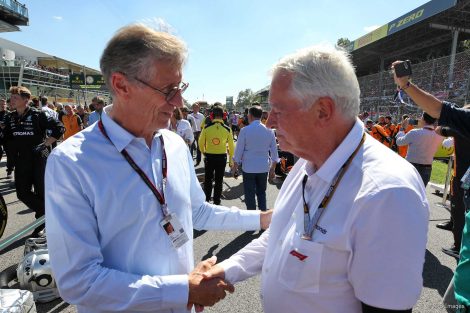By 2026, fuel tanks of Formula 1 cars are set to be filled with 100% sustainably-sourced fuel. There are currently four companies supplying the 20-car grid, and more working with the world championship on its future fuel regulations.
Currently, ExxonMobil supplies Red Bull and AlphaTauri, with the latter sponsored by Mobil’s Polish trading partner PKN Orlen. Petronas products appear in all of the Mercedes-powered cars on the grid – despite two of those teams being sponsored by rival oil firms – while Alpine use fuel from BP subsidiary Castrol and all Ferrari-powered cars use Shell.
Aramco is the title sponsor of Aston Martin and the fuel supplier for the Formula 2 and Formula 3 championships this year with a “55% sustainable” fuel. It has worked closest with F1 on its sustainability target, and the feeder series are being used as testing ground to help them refine their technology and move closer to those goals.
By bringing more sustainable fuel to F1, there will be changes to the science behind the sport. Speaking to media including RaceFans at this year’s Bahrain Grand Prix, F1’s chief technology officer Pat Symonds explained the technology behind their sustainable fuel plans.
Symonds began by explaining that the new fuels will, like the petrol currently used in F1, be hydrocarbon-based mixes. The key to a fuel being ‘sustainable’ is that its elements come from sustainable sources.
“Hydrogen-carbon is really the basis of it. And it’s this that we use to synthesise a sustainable fuel,” he explained. “Now, where you get the hydrogen from is reasonably obvious: electrolysis of water. It’s a well-known method of doing it, you apply electricity through water.
“Everyone knows water is H₂O. So you split off the hydrogen and the oxygen. So you then have your hydrogen which, if the electricity has come from renewable sources, is actually a green hydrogen. The carbon is much more interesting.”
Advert | Become a RaceFans supporter and
The way carbon will be sourced for fuel in F1 and its feeder series is, reckons Symonds, “going to start to contribute to the art and the science of what we can do” in making such technology more sustainable across all applications.

“Nature is great at taking CO₂ out of the air, splitting out the carbon, using it to grow the plant or whatever, and releasing the oxygen. So we need to sort of synthesise that process. And we can do that…
Click Here to Read the Full Original Article at RaceFans…
